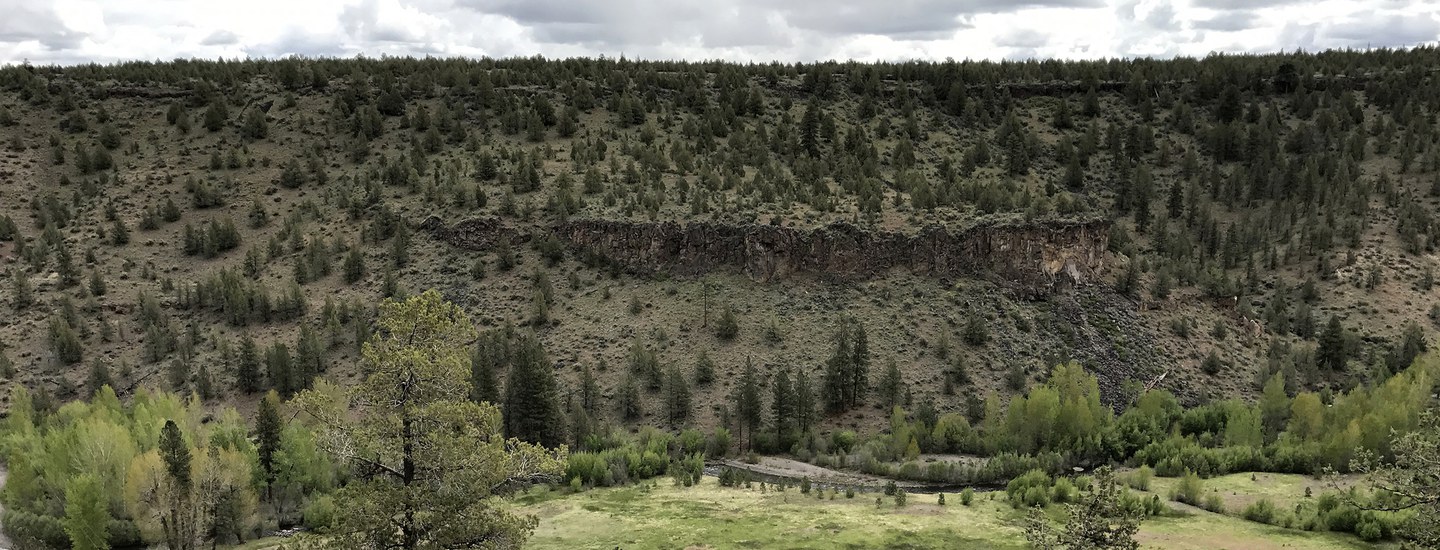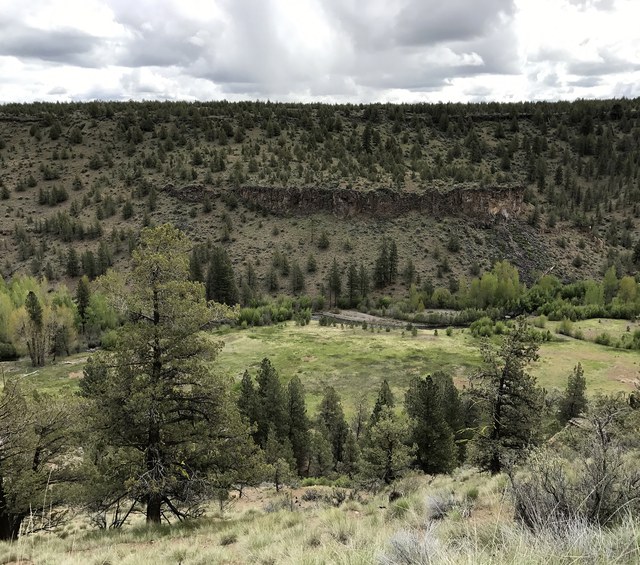Welcome to Cool Words for Hot Times, an ongoing series in which we’ll unpack and break down the jargon-riddled world of climate change. Today, we take a deep dive into resilience.
These days, it can feel like the term “resilience” gets thrown around more than a tennis ball at a dog park on a sunny afternoon. It is a buzzword whose moment has lasted the better part of a decade and whose meaning has faded in its ubiquitous usage. For better or worse, the term has threaded itself into the ideological fabric of nearly any cause or institution hoping to exude adaptability, toughness, and pragmatism.
To add to the cacophony, there are many forms of—often unrelated—resilience. To name just a few, there’s psychological resilience, the physics concept of resilience, and, of course, climate change resilience. The latter of these tends to relate most closely to our work at the Deschutes Land Trust, but even climate change resilience is a broad idea. Case in point: the last time I searched for news on “climate change resilience,” the top hit was an article on breeding weatherproof sheep in Europe, which isn’t exactly our specialty.
With so many different conceptions floating around out there, it’s hard to keep track of what anyone really means by climate change resilience. Let’s start to break it down by first consulting some basic definitions. Our friends at the Merriam-Webster Dictionary define resilience (noun) as:
1: the capability of a strained body to recover its size and shape after deformation caused especially by compressive stress
2: an ability to recover from or adjust easily to misfortune or change
The first of these definitions describes how people understand resilience in physics—"the ability of an elastic material (such as rubber or animal tissue) to absorb energy (such as from a blow) and release that energy as it springs back to its original shape” (Merriam-Webster). The second definition applies more to people, plants, animals, or other systems, but the same concept of bouncing back from change still applies. The implication here is that a resilient body, person, species, etc. has the ability to return to its original state after an impact, and this second definition is a useful way to begin thinking about climate change resilience.
Even the Deschutes Land Trust has multiple ways of thinking about resilience. In keeping with the above dictionary definitions, we consider the wildlife, forests, grasslands, and rivers we protect to be resilient if they can withstand or bounce back from a sudden change. These changes could include anything from fire, to flooding, to invasive species, to off-trail hiking, all of which can disturb soils, waterways, plants, and animals. When systems are resilient it ensures that these disturbances don’t cause lasting damage.
This has long been how the conservation world has thought of “ecological resilience,” and it’s served as a North Star for much of our land protection, stewardship, and restoration work at the Deschutes Land Trust.
Now though, climate change—as it’s wont to do—has muddied up this idea of resilience, forcing land trusts and other conservation organizations to reconsider what it looks like for a system to “recover” from change. The key difference with climate change is that it isn’t a temporary or discrete disturbance from which a system can “bounce back” or return to “normal.”
I don’t want to hand anyone a one-way ticket to Doom-and-Gloom here, but now is definitely an important moment to hop on the Stark Reality Train: climate change is not temporary. It is a long-term, ongoing, human-caused increase in the temperature of the air and the ocean that has numerous, often drastic effects on all life forms (including people).
However, what climate change doesn’t alter as significantly—if at all—is the physical structure of the Earth. For example, the snow on the Cascades might melt as the result of warmer air temperatures, but the Three Sisters themselves will not experience physical changes beyond those occurring naturally over the course of geologic time.
This relative constancy of geological and topographical features opens up a new way of thinking about land-based climate change resilience called “conserving nature’s stage.” The premise of conserving nature’s stage—sometimes also called “terrestrial resilience”—is that soils, rocks, slope angles, aspects, and the like—collectively, “geophysical features”—support the diversity of life that flourishes above-ground. The more diverse the geophysical features, the more different climates an area supports, and the more diverse the species and natural systems are in that area.
Conserving nature’s stage also takes into account that species must move and adapt as climate change alters their habitats, so it accounts for species’ ability to successfully move across and between different areas to meet their own needs. Conservation scientists call the measure of plants’ and animals’ ability to get from place to place “landscape permeability” or “connectivity.” (Look out for a future Cool Words for Hot Times post on connectivity, coming soon!)
Together, diverse geophysical features—which create “topoclimate diversity”—and a high level of landscape permeability facilitate terrestrial resilience. This is another, very specific way to conceptualize climate change resilience, and it’s changing the way the Deschutes Land Trust prioritizes the lands we conserve and steward. Instead of only considering the current habitats and species in the places we protect, we are taking a closer look at systems’ terrestrial resilience—their ability to support various life forms well into the future, even if those future species and habitats do not reflect what we see today.
Terrestrial resilience is helping us narrow down what we mean by “climate change resilience,” but it’s not the be-all, end-all of responding to climate change in Central Oregon. Climate change resilience—however you think of it—is not static; it fluctuates as a function of the severity of climate change impacts and a system’s exposure to those impacts. A resilient natural system will still experience change, but perhaps at a slower rate or to a lesser extent than a non-resilient system. Protecting systems that appear to have high levels of resilience will only get us so far if climate change intensifies beyond what we anticipate. If adaptation and mitigation are the two main ways to slow and respond to climate change, resilience connects the two, ensuring that systems can successfully adapt where mitigation efforts fall short.
Here, I want to take a moment to turn to a more philosophical issue at play. Beyond its physical components, resilience is also about perception. This is a core idea in the realm of psychological resilience, and it has useful applications to climate change resilience as well. In other words: do we, as humans, perceive climate change impacts as a good-bad binary that always lands on the “bad” side? Or do we look at the impacts in a more nuanced way that leads us to face those impacts head-on? Do we make futile attempts to return changed habitats to some perceived state of “normal,” or do we focus on conserving and stewarding diverse natural systems even as the contents of those systems shift?
Enhancing resilience on our lands and in our waters requires maintaining a sense of optimism and the perception that we do have agency when it comes to acting locally on climate change.
In this sense, embracing climate change resilience is the exact opposite of climate change denial or nihilism. It is an acknowledgement that change is happening, and it empowers us to take concrete action in response to those changes. We hope you’ll join us at the Deschutes Land Trust as we continue searching for the best ways to make Central Oregon’s human and natural communities resilient to whatever lies ahead.
Learn More:
- Check out the Deschutes Land Trust Climate Change Commitment
- The Nature Conservancy’s full report on Conserving Nature’s Stage
- Musings on how land trusts can respond to climate change in Anthroposphere: The Oxford Climate Review (written by Fiona)


